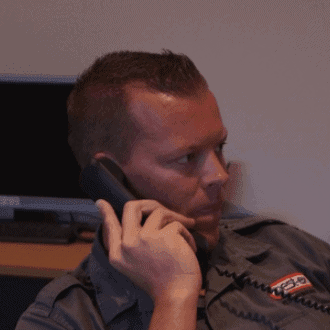
Got a Pest Problem? Call Us Today →
Bees play a crucial role in the environment as pollinators, contributing significantly to the growth of many plants, fruits, and vegetables. However, when bees decide to nest in or near human dwellings, they can become a cause for concern. While it’s natural to feel uneasy about having a bee nest in your backyard or near your home, it’s essential to remember that bees are not inherently aggressive and can be safely relocated without harm. In fact, removing bees without harming them is not only beneficial for the bees but also helps maintain a healthy ecosystem.
In this article, we’ll cover how to remove bees safely and humanely, the importance of protecting bees, and the best ways to manage a bee infestation without causing any harm to these vital pollinators.
Before we get into the details of how to remove bees without harming them, it’s important to understand why bees are so valuable. Bees, particularly honeybees, are essential for the pollination of a wide variety of plants, including many crops that humans rely on for food. According to the Australian Pesticides and Veterinary Medicines Authority (APVMA), bees are responsible for pollinating approximately one-third of the world’s food crops.
Despite their importance, bees are often threatened by habitat loss, pesticide use, and climate change. It’s therefore crucial to handle bee removal with care, ensuring that they are safely relocated without harming them.
Many people may feel that killing bees is the easiest solution when they find a nest close to their home, but this can have significant ecological repercussions:
With these considerations in mind, it’s always better to find a humane way of removing the bees rather than resorting to lethal methods.
If you’ve discovered a bee nest near your home and are concerned about safety, it’s essential to approach the situation calmly and thoughtfully. Below are some methods you can use to safely and humanely remove bees:
The best option for removing bees from your property without harming them is to call a professional pest control service. While most pest control companies are equipped to deal with pests in a standard way, many now offer humane bee relocation services.
If you’re uncertain about how to deal with a bee nest, a professional service will ensure the bees are handled safely and humanely.
If you feel confident handling the bees yourself, a bee relocation box can be a great way to move the bees safely. Bee relocation boxes are designed to attract bees and encourage them to move into a safe container for relocation.
If you’re not ready to relocate the bees immediately, creating a physical barrier around the nest is an effective temporary solution. This prevents the bees from entering your home or coming into contact with people, while still allowing them to remain in their natural habitat.
Natural repellents can be used to gently encourage bees to move away from your property without causing harm. These methods work by emitting scents that bees find unpleasant, prompting them to leave the area.
While these methods are less invasive than other approaches, it’s important to remember that they may take some time to work, and they are most effective when combined with other humane removal methods.
Preventing future bee infestations involves making your property less inviting to bees. There are a few steps you can take to reduce the likelihood of bees establishing nests near your home:
Taking these preventive steps can help reduce the chances of bees making your home their permanent residence.
While it’s important to safely remove bees, there are some methods that should be avoided:
Pesticides and chemicals should never be used to kill bees. These substances are harmful not only to the bees but also to the environment. Additionally, using pesticides can contaminate your garden and harm other beneficial insects, such as butterflies and ladybugs.
Destroying the hive can agitate the bees and lead to their aggressive behaviour. This also kills the bees, which is counterproductive if you want to preserve them. It’s best to relocate the hive or nest to a more suitable location.
Bees can become defensive if they feel threatened, so it’s essential to wear protective gear when handling or removing them. Always wear a bee suit, gloves, and a veil to protect yourself from stings.
If the bee nest is in a difficult-to-reach location, such as inside the walls, roof, or under the eaves, it’s best to call a bee control professional. Additionally, if you have a severe bee infestation or are allergic to bee stings, seeking professional help is the safest option.
A professional pest control service can assess the situation, use the correct equipment, and relocate the bees safely. They will also be able to advise you on steps to prevent future infestations.
Removing bees from your property doesn’t have to mean harming them. Bees play an essential role in the environment, and they deserve to be relocated safely to a new home where they can continue their important work. Whether you choose to relocate the bees yourself using a bee box, create barriers around the nest, or call a professional for assistance, there are humane methods available that ensure the safety of both you and the bees.
By taking these steps, you can handle a bee infestation in a way that preserves the bees and contributes to a healthier environment. Remember, bees are not only essential for agriculture but are also critical for maintaining biodiversity in our ecosystems. Protecting them helps ensure a flourishing, healthy planet for future generations.







